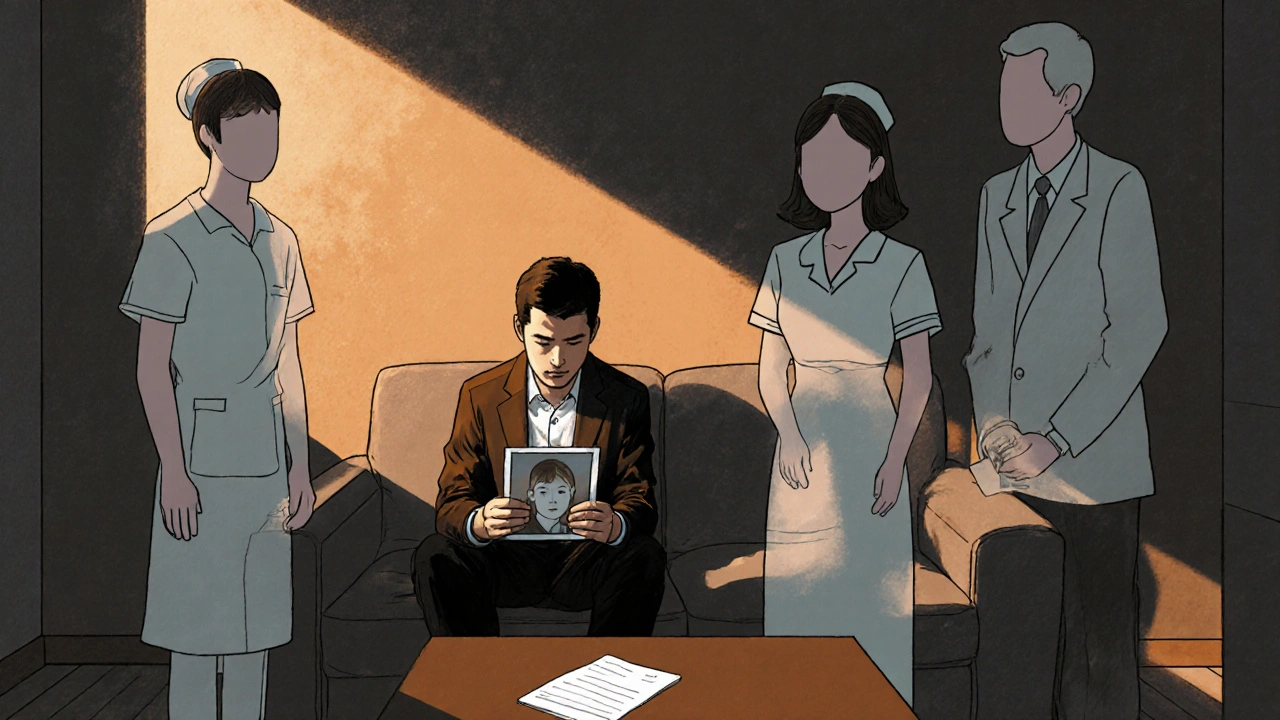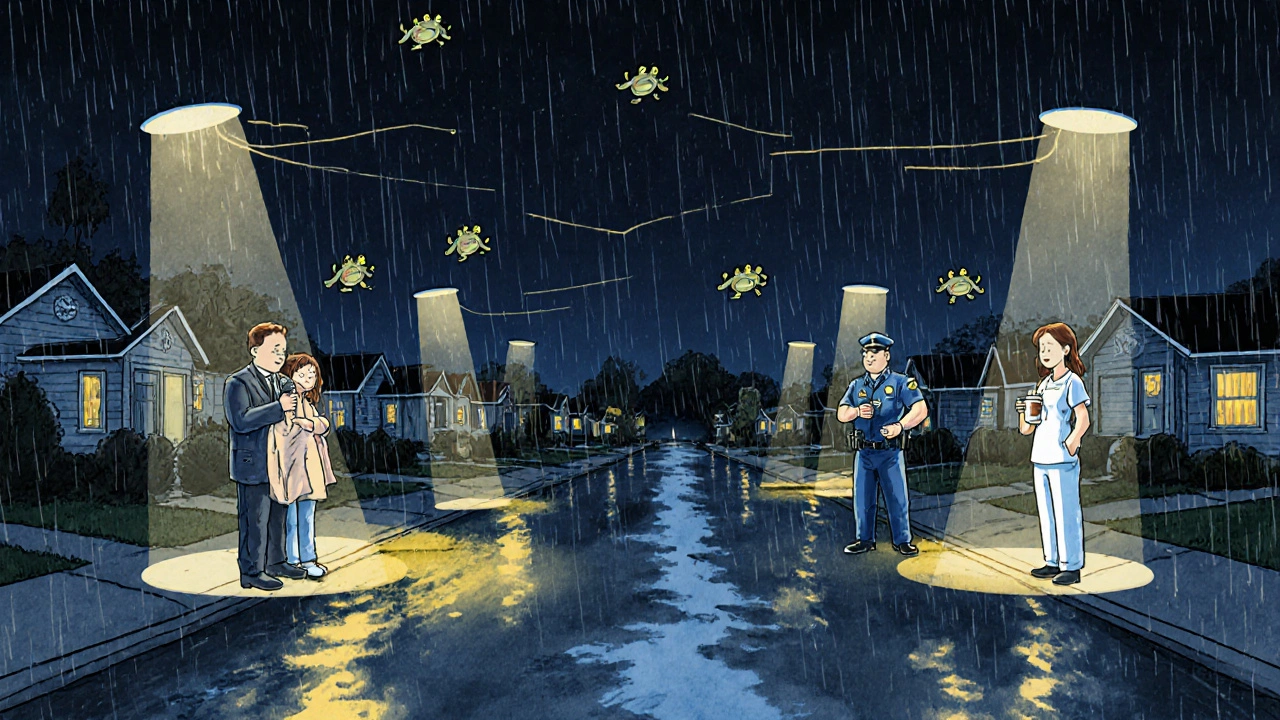Ensemble drama isn’t just about having a lot of characters. It’s about how those characters’ lives collide, twist, and sometimes break open in ways they never saw coming. In films like Magnolia and Babel, you don’t follow one hero-you follow a web of people, each carrying their own pain, secrets, and fleeting hopes, all connected by invisible threads. These aren’t random coincidences. They’re carefully constructed moments of human collision, where a phone call, a lost child, or a gunshot in another country ripples through lives thousands of miles away.
What Makes an Ensemble Drama Different?
Most movies center on one person’s journey. You root for the detective, the lover, the rebel. But in ensemble drama, there’s no single protagonist. The story belongs to everyone. In Magnolia (2000), you meet a dying game show host, a runaway teen, a struggling cop, a failed father, and a nurse who’s seen too much. None of them know each other at first. But by the end, they’re all standing in the same room, soaked by rain that falls for no reason at all-except maybe to wash away something they’ve been carrying.
Paul Thomas Anderson doesn’t just juggle these stories-he makes them echo. A father’s regret in one scene becomes a son’s fear in another. A child’s scream in a hospital ties back to a father’s silence in a car. The film’s structure feels like a heartbeat: slow, heavy, then suddenly racing. When the frogs fall from the sky, it’s not a gimmick. It’s the universe saying: this is too much. You can’t ignore this anymore.
Babel: When Silence Breaks Across Borders
Alejandro González Iñárritu’s Babel (2006) takes the same idea but spreads it across continents. A Moroccan goat herder buys a rifle. A tourist in the desert gets shot. A deaf Japanese girl retreats further into silence. A Mexican nanny crosses the border to care for two American kids. And a U.S. diplomat’s wife sits in a hospital, waiting for news she doesn’t want to hear.
Each story is isolated. No one knows what’s happening in the others. But the camera doesn’t lie. The same rifle. The same moment of panic. The same fear that no one will come. Iñárritu shows us how easily a single act-someone pulling a trigger, someone forgetting to lock a door-can unravel lives across oceans. And the worst part? No one ever finds out how they’re connected. The audience does. That’s the point.
In Babel, language isn’t just words-it’s a wall. The deaf girl can’t hear her mother’s voice. The nanny can’t explain why she left the kids. The Japanese teen can’t tell anyone how broken she feels. The film doesn’t need dialogue to make you feel the distance. You feel it in the pauses. In the way a mother clutches a phone that never rings.
Interwoven Lives: The Hidden Threads
What binds these stories isn’t plot. It’s emotion. Both films use the same trick: parallel suffering. The man in Magnolia who can’t say sorry to his son? He’s the same man who won’t let his nurse sleep because he’s afraid of dying alone. The teenager in Babel who runs away because she feels invisible? She’s not so different from the American boy who shoots the tourist because he thought the rifle was a toy.
These aren’t just characters. They’re mirrors. You see your own fear in the cop who can’t reach his daughter. You see your silence in the Japanese girl who turns off her hearing aids. You see your regret in the father who kept his love locked up like a secret.
The magic of ensemble drama is that it doesn’t tell you how to feel. It lets you find your own pain in someone else’s story. You don’t need to know their names. You just need to recognize the look in their eyes.

Why These Films Still Resonate
It’s 2025. We scroll past ten different tragedies every day. We watch news clips of wars, accidents, and family breakdowns and move on. But Magnolia and Babel refuse to let us look away. They force us to sit with discomfort. To feel how small our actions are-and how big their consequences can be.
These films came out over 20 years ago, but they feel more relevant now than ever. We live in a world where a tweet in Tokyo can trigger a protest in Chicago. A missed call from a parent can lead to a child’s breakdown. A stranger’s kindness on a train can change someone’s entire path. We’re all part of the same web. We just don’t always see the threads.
Anderson and Iñárritu didn’t make these films to be depressing. They made them to be honest. Life doesn’t come with neat endings. Sometimes, the only resolution is that you’re still standing-even if you’re shaking.
The Tools of the Craft
How do you pull this off without it feeling forced? Both directors use the same techniques:
- Repeating visual motifs: The red scarf in Babel, the game show lights in Magnolia. These aren’t just props-they’re emotional anchors.
- Overlapping sound design: You hear a child crying in one scene, and later, it’s the same cry in another room. The sound doesn’t match the picture-but it matches the feeling.
- Non-linear timelines: Events don’t happen in order. A gunshot is shown before the trigger is pulled. A phone call is answered before it’s made. This isn’t confusion-it’s immersion. You’re feeling time the way people do when they’re falling apart.
- Minimal exposition: No one says, “I’m lonely because my dad left.” You see it in the way they hold a coffee cup too tight. Or how they avoid eye contact.
These aren’t tricks. They’re observations. The directors didn’t invent these methods-they noticed how real people live.

Who This Is For
If you’ve ever felt like no one understands you-this is for you. If you’ve ever wondered if your pain matters in a world that moves too fast-this is for you. If you’ve ever reached out and gotten silence in return-this is for you.
These films don’t offer answers. They offer company. You’re not alone in your silence. Someone else is holding their breath right now, just like you.
What Comes After
After watching Magnolia or Babel, you might not feel better. But you’ll feel less alone. That’s the quiet power of ensemble drama. It doesn’t fix anything. It just says: I see you. And I see the threads.
If you want more, watch Short Cuts by Robert Altman. Or Crash (2004)-though it’s more forced. Or American Beauty, where loneliness hides behind white picket fences. But start here. These two films are the foundation.
What makes an ensemble drama different from a regular movie?
An ensemble drama doesn’t center on one main character. Instead, it follows multiple people whose lives intersect in unexpected ways. There’s no single hero-each character has their own story, pain, and arc. The power comes from how their experiences echo each other, even if they never meet.
Why do these films use overlapping stories and timelines?
Overlapping stories and non-linear timelines mimic how real life feels-fragmented, emotional, and out of order. You don’t experience trauma in neat sequences. You feel it in flashes: a sound, a smell, a silence. These films use structure to mirror inner chaos, not to confuse the viewer.
Are Magnolia and Babel based on true events?
No, neither film is based on true events. But they’re built from real human behaviors: a parent’s silence, a child’s fear, a stranger’s kindness, a moment of violence that changes everything. The emotions are true-even if the situations aren’t.
Why do the characters never fully connect in these films?
Because real life rarely gives us perfect resolutions. People miss each other. Words go unsaid. Connections are invisible until it’s too late. The films show us how close we are-and how far apart we still are. That tension is the whole point.
Is there a message in the frogs falling in Magnolia?
The frogs aren’t a metaphor for anything literal. They’re a surreal moment that forces everyone to stop. It’s not about science-it’s about surrender. For the first time, all the characters are in the same space, broken open by something they can’t explain. The rain washes away their masks. That’s the message: sometimes, only the impossible can make us face the truth.
Can you recommend other ensemble dramas like these?
Yes. Try Short Cuts by Robert Altman, which weaves together 22 characters in Los Angeles. American Beauty explores suburban isolation with quiet precision. Crash (2004) also uses intersecting lives, though it’s more overt in its messaging. For something newer, Manchester by the Sea has an ensemble feel, even if it centers on one man-because everyone around him carries their own grief.

